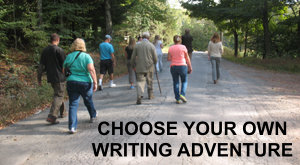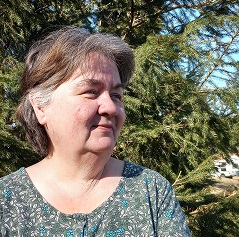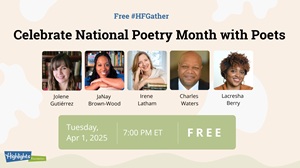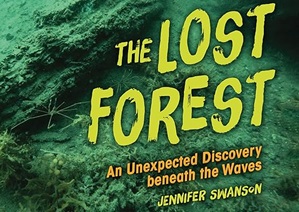Begin here! You begin your adventure nervously shifting in your chair. What kind of educational writing would work best for you? Do you even have a niche? After a few deep breathing exercises, you’re ready for your first question. Are you or have you ever been a classroom teacher?
If Yes, you’re lucky. You CAN go to question 2, but you’re also a perfect candidate for question 1.
If No, jump to question 2.
1. Who is your audience? Do you feel the strong desire to share the things you’ve learned and gained directly with your fellow teachers, or is your heart for writing those things children/teens read and do?
If Teachers, go to Project A.
If Children, go to question 2.
2. Do you draw or consider yourself very good at imagining the layout of text and illustrations on the page? Actual training in graphic arts will be a huge boon, but even just being a talented amateur can help in some projects.
If you are Artsy, go to question 3.
If you are not Artsy or want to see more non-artsy options, go to question 4.
3. Do you like/read comic books or use them often in your classroom?
If Yes, go to Project B.
If No, go to Project C.
4. Don’t worry, most writers in the educational field aren’t particularly artsy. There are plenty of opportunities that won’t usually require any art skills at all. At most, you may be asked to find sample illustrations or photos. So, first question, do you like to write really short material (a few hundred words tops) or do you like to be able to stretch out and explore a topic or story?
If you love the challenge of packing much in little words, go to question 5.
If you prefer to relax and spread out a bit, go to question 8.
If you like quirky writing in unique forms, go to question 11.
5. Is it really important to you to have a finished book in your hands when the experience is over? Some opportunities will not generate author copies of the work, though you usually can include the project in your resume (depending upon your contract.)
If Yes, go to question 6.
If No, go to question 7.
6.Think about what you like to write. Do you want most to write for preschool and kindergarten, early elementary, or books to support very specific reading levels?
If you like the challenge of writing to very specific reader’s ability, go to Project D.
If you love introducing the pre-reader to new concepts, go to Project E.
If you love simple, clear nonfiction writing, go to Project F.
7. Do you have a strong background in writing for magazines?
If Yes, go to Project G.
If No, go to Project H.
8. Do you prefer fiction or nonfiction?
If Fiction, go to question 9.
If Nonfiction, go to question 10.
9. Do you prefer to write for elementary readers or older readers?
If Elementary Readers, go to Project I.
If Teens, go to Project J.
10. Nonfiction for fluent readers can be quite long. And you should be prepared to do lots of research. Clear organization, lively writing, and careful attention to accuracy are essential. So, given that – do you like to write about people or stuff?
If People, go to Project K.
If Stuff, go to Project L.
11, Educational writing also has room for unusual forms. Very unusual formats will have fewer publishers, but often the publishers are eager for writers who are particularly good at that kind of work. Given that, do you like to write poetry? Plays? Crafts or Recipes?
If Poetry, go to Project M.
If Plays, go to Project N.
If Crafts or Recipes, go to Project O.
SO – WHAT PROJECT IS RIGHT FOR YOU?
PROJECT A. Most materials written for teachers are also written by teachers. At the very least, publishers will want to see that you have some kind of teaching related degree, even if you don’t have actual teaching experience. Materials written for teachers include support materials for classroom interaction, lesson plans, and even educational philosophy.
PROJECT B. Graphic Novels and nonfiction created in comic book style have proven to be an excellent resource for reluctant readers or students who are strong visual learners. If you aren’t a professional illustrator (and most of us aren’t), you will usually submit graphic novel manuscripts either in script format or as a short story – but the ability to imagine the book as a graphic novel should influence how you write the text.
PROJECT C. Workbooks and Worksheets are another area where strong layout or drawing skills are a real advantage. Today, the workbook market is fading in trade publishing but doing just fine in the educational markets where workbooks are often a less expensive choice than textbooks, considering the ever changing standards. If you can tie a project into the common core standards, you have even more success in this field. This is also a field where being a teacher is a boon (and for some publishers, it’s a requirement), but non-teachers can break in with plenty of study of recently published workbooks.
PROJECT D. Leveled Readers can be very short – also, they can be fiction or nonfiction. If they are part of an overall reading system, the earliest books are usually paperback, inexpensive, and using very few words. This is a type of writing where classroom experience is a plus, but publishers usually don’t rule out a talented writer who has researched early literacy and is fluent in age leveling.
PROJECT E. Board Books aren’t just for baby showers, a few educational publishers also produce them for preschool and kindergarten use because of their extreme durability. You won’t see a lot of publishers doing these, so to have a full career, you’ll probably need to do other writing as well.
PROJECT F. Elementary Nonfiction is a huge area with many publishers producing material. It usually is leveled less stringently (though you will still work within certain parameters) and covers a wide array of topics with the most popular being those connected with science and social studies.
PROJECT G. Magazine writers usually make fantastic test passage writers, because the short format and high interest of magazine writing carries over perfectly to test writing. Test passage writing can pop up a couple of times a year and demand lots of writing in little time, but the results are usually much better pay than most magazines and lighter research demands than many magazines.
PROJECT H. Unlike trade publisher’s book packagers, the “producer” in educational publishing may be looking for writers to write books or may be looking for writers for novelty formats. Once you connect with a book producer, you may work on a variety of projects from read aloud cards to literacy support materials to book length nonfiction.
PROJECT I. Let’s talk about series fiction. Educational publishers produce most of their fiction in either leveled readers (which are more about the reading than the story), graphic novels, or series books for elementary schools. For the longer elementary-level writer – series fiction offers a chance to dip into adventure, historical fiction, science fiction, and more. The easiest series fiction to sell will have a strong tie to classroom subjects. Humor, action, and high interest subjects all help sell a series.
PROJECT J. For young adult writers, most fiction opportunities exist in trade publishing, but one area is strong and growing: hi-lo fiction. In these stories, the situations and character must reflect a teen understanding, which the text is normally held to a fourth grade reading level or below. Sometimes hi/lo books have more flexible reading levels, but depend upon rigid formats of short paragraphs, short chapters and low word counts overall to produce a book for the challenged teen reader.
PROJECT K. Biographies are often longer books, even for elementary aged readers. Unlike trade biographies, they don’t usually focus on just one aspect or episode in a subject’s life. They will contain everything a student would need to write a report on the biography subject, which still maintaining a clear organization and lively writing. Some biographies (especially those that are part of a series) will tie the subject to specific period of historical change or to a specific type of achievement. For teens, biographies also include pop culture subjects – with these, the writing is often hi/lo.
PROJECT L. Teen nonfiction that is written at grade level is usually deeply researched and encourages the reader to ask questions about the subject and how it relates to today. The book may be written as part of a resource line for report writing, or it might be written to aid the teen in making decisions (about drugs or education or social issues). Books are clearly organized with a strong focus. Pop culture topics are often written with more of a hi/lo approach.
PROJECT M. Poets can sometimes find more small educational niches than one might expect. Educational Material Producers often handle the kinds of small projects that can benefit from a poetry writer. Also assessment writing for literary passages will often need poets. Finally, poets who can bring across nonfiction informational material in perfect rhyme and meter can become the “go-to” person for some publishers. Making these connections often means casting a wide net with your introductory packet.
PROJECT N. Short plays and reader’s theater is another unusual niche that requires special skills and formats. Again, test passage writing sometimes includes unique forms like short plays. Also, some educational publishers specifically produce play collections. Plays are often tied to specific historical events or popular social topics like the importance of recycling or how to deal with bullies.
PROJECT O. The Common Core supports students both following step-by-step directions and student writing of step-by-step directions. As a result, many elementary nonfiction lines include recipes books or craft books. Writers who can craft short, simple recipes (usually not using dangerous kitchen equipment) or simple crafts might consider pitching a cookbook or craft book – the book should be tied to a very specific theme like “Flower Power Snacks (all snacks look like flowers and use natural ingredients)” or “Creating Art from Found Objects” (where all projects utilize common items that might be seen as garbage.)







